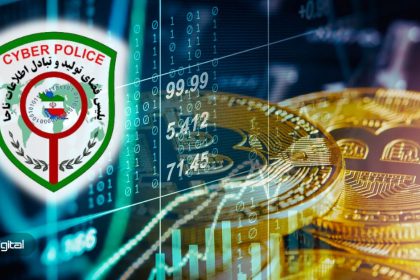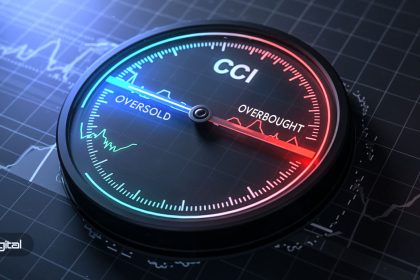Dynamic NFT (dNFT) token is a type of token that is designed in such a way that its characteristics change according to new conditions. The most common use of dynamic asynchronous tokens is in the blockchain gaming industry; Because the in-game NFTs can be designed so that their shape and capabilities change as the player advances to the next stage.
Non-Fact Tokens (NFT) need no introduction. Currently, they are an important part of the blockchain industry and have expanded their popularity and applicability beyond the boundaries of digital currency projects. However, most of the current asynchronous tokens have static and fixed properties.
In other words, after being registered on the blockchain, the shape, identifiers, and metadata of these tokens remain the same and do not change. Now imagine a dynamic and variable token that can take different shapes and forms while maintaining authenticity and security.
In fact, dynamic asynchronous tokens are designed to change after certain criteria are met or in response to predefined triggers. These tokens use smart contract technology and decentralized oracles to communicate with the world outside the blockchain.
In this article, with the help of an article from the Coingeco website, we will examine the dynamic non-monogamous token and how it works. Then, we will get acquainted with the advantages and disadvantages of this type of non-traditional token, and finally, we will mention some current applications of this type of NFT. To learn more about the new generation of NFTs, stay with us until the end of this article.
What is a dynamic heterogeneity token?
In a simple definition, a dynamic NFT token (dNFT) is a type of token whose data changes in response to external stimuli. These stimuli initiate unique changes based on pre-programmed and flexible criteria. For example, in blockchain games, unique in-game tokens can be designed in such a way that their shape and functionality change as the player advances to the next level.
Read more: NFT making tutorial; How to sell our token?
It should be noted that the dynamic asynchronous token technology has existed for a long time and was even used in the game CryptoKitties in 2017. However, this type of token has found more uses and has become more important today. For example, in June 2021, basketball star LaMelo Ball entered the non-coin space by releasing special NFTs that changed their shape based on external data.
For example, if the player won awards such as Rookie of the Year, the value of the NFT token would also increase. It is interesting to note that Lamelo Ball’s tokens are now considered to be simple and early examples of dynamic heteronormative tokens, and dNFTs have seen a lot of development since then.
Read more: Getting to know 4 NFT applications in the real world
tokenThe How does dynamic heterogeneity work?Theslow?
Dynamic asynchronous tokens retain their unique identifiers on the blockchain; But the metadata and appearance of these tokens changes based on the new status of the smart token contract and in response to external data. So, they are the same non-coin tokens, but with new features. The three main elements that make up dNFTs are: the ERC1155 standard of asynchronous tokens and a set of smart contracts and decentralized oracles.
The ERC1155 token standard is something between the ERC721 asynchronous token standard and the ERC20 standard token. The ERC1155 standard is flexible and allows the token to change based on smart contract data.
Read more: What is NFT0.2? The emergence of a new generation of non-homologous tokens
Oracles are management systems and data feeds that connect the system to the outside world. Oracles, after obtaining reliable data, transfer it to smart contracts. In fact, in the decentralized finance industry and other blockchain systems that require reliable data from external sources, decentralized oracles such as Chainlink have found many applications.
In dynamic asynchronous tokens, oracles do the same and are the only data source for these tokens. They sort the data and communicate the necessary changes to the dNFTs smart contracts. The smart contract also manages the metadata change process. This contract is designed to be able to retrieve information from oracles and make automatic changes to related data.

How dNFT works
In short, the ERC1155 standard is built using a set of metadata and a smart contract associated with Oracle. Oracle communicates with an environment outside the blockchain and receives off-chain data. After receiving new data, Oracle passes it to the dynamic token smart contract.
Then, the smart contract selects the necessary information from the oracle and automatically modifies the metadata of the token token according to a pre-designed algorithm. This process is carried out in the form of a semi-open system for non-traditional tokens and has special advantages, some of which we will mention below.
Pros and Cons of Dynamic Asynchronous Token
A flexible blockchain system such as a dynamic asynchronous token can have several advantages. In the following, we mention two examples of these benefits.
- User activity and interaction: The dynamic token is a semi-open system that works based on data availability and forms an effective, interactive, two-way communication channel. For example, a meteorological dNFT could indicate weather changes, or the appearance of an in-game dNFT could change based on player progress or expertise.
- Applicability and general acceptance: Asynchronous tokens are statically limited and their information remains constant over time. Thus, a handful of these tokens can fit into the interactive system. Hence, the use of traditional non-like tokens usually does not extend beyond profile pictures. On the other hand, the dynamic heterogeneity token is not limited and can be used in wider systems. In fact, dynamic asynchronous tokens adapt well to many real-world systems such as real estate and even vehicle tracking. In the continuation of this article, we refer to more examples of these applications.

Disadvantages of dynamic heterogeneity token
Along with the advantages and achievements of dynamic tokens, it is not bad to point out some of their disadvantages:
- Need advanced resources: Thanks to the apps and platforms available, creating non-static tokens is not that difficult even for non-professional and non-technical developers. However, the creation (minting) of dynamic asynchronous tokens requires more knowledge and expertise. In addition to the normal NFT minting process, one must have a thorough knowledge of how smart contracts and oracle technology work in order to properly develop the interactive capabilities and mutable features of dynamic asynchronous tokens.
Read more: Best tools for making NFTs
- Need a lot of computing resources: The normal mint token process does not require a lot of computing resources. On the other hand, in order to build dynamic asynchronous tokens, the developer must work on multiple smart contracts and oracles; Therefore, it requires much more hardware and software computing resources. It should be mentioned that even after the mint token, the management and maintenance of dynamic NFTs requires more computing resources, and finally, the maintenance of the dynamic non-monotonic token imposes a higher cost on the hands of the creator and owner.
- Increased security risk: Dynamic asynchronous tokens are designed to continuously interact with oracles that mine off-chain data. Also, the data obtained from this interaction causes continuous change in the metadata. Therefore, dynamic asynchronous tokens are open to the environment outside the blockchain and appear more vulnerable to possible attack by malicious players. If Oracle is compromised, a hacker can bypass blockchain security measures and hack into the system. Thus, the attacker potentially gains access to the blockchain system and the attacked wallet.
What are the applications of dynamic non-monotonic token?
The dynamic token has many uses, and in the rest of the article, we will mention only a few examples of them. We should not forget that these tokens have only recently been considered and are likely to have many more uses in the future.
Gaming
GameFi projects and decentralized games are one of the common uses of non-monogamous tokens. The reward system in GameFi and blockchain-based games works based on non-monogamous tokens. Players also enjoy full ownership of their in-game items thanks to unique tokens. In blockchain games, NFTs can also represent characters and their abilities. However, these tokens are fixed and static, and in most cases, a new token must be created in the game in order to represent the change of game features and characters.
Dynamic asynchronous tokens are a big help in these situations and can take decentralized game design to a new level. Dynamic non-game tokens allow gamers to use a single NFT to represent a character or other in-game item throughout the game, continuously changing it at each stage.
Read more: What is Gimfai? Get to know the world of decentralized games
For example, when a gamer wants to change a character or its characteristics in role-playing games, he can use dynamic and changeable tokens to represent the character’s new abilities. Similarly, the in-game items can change their shape with the help of these tokens, despite keeping the initial ID of the token on the blockchain. For example, a single sword in the game can gain new abilities while remaining the same.
Using dynamic asynchronous tokens in decentralized games can save resources and provide a more immersive experience to gamers. Hence, dynamic asynchronous tokens can have an undeniable impact on the future of blockchain gaming.
Sumanstar

Sui Monstar is one of the decentralized blockchain games designed by dNFT-based characters. As gamers play, features such as health and friendships and accessories are also updated and changed in game characters. Although dynamic asynchronous tokens are still in their early stages, it can be predicted that more gaming platforms will adopt dNFT-based design in the future.
Real estate and landTheVirtual ones
Currently, one of the most important and common uses of non-standard tokens is buying and selling virtual lands. In this space, virtual tokens play the role of virtual lands, and the holder of the token is considered the real owner of the land. Non-property tokens have metadata that is recorded at the time the token is minted and describes the properties of the property such as the size of the land.
However, property information almost never stays the same. During the routine of land management and development, part of the land information changes, and non-fixed tokens cannot reflect new data changes due to their immutable nature. This is where dynamic asynchronous tokens come into play.
Read more: What is NFTfi?
Real estate projects can issue a dynamic asynchronous token with a smart contract and oracle that reflects changes in land features by instantly changing metadata information. For example, the virtual real estate platform Coded Estate has created a system based on dynamic asynchronous tokens and smart contracts and zero knowledge technology.
In addition to providing a short-term property rental market and the availability of advanced homes, this project brings innovation and progress into the traditional real estate space. This project hopes to build a more decentralized market in the world of virtual real estate by increasing transparency, liquidity and efficiency.

Art
A large part of the token space is dedicated to art. Tokens like Cryptopunks and Board Ip Yacht Club (BAYC), which somehow fall into the category of works of art, have dominated the world of NFTs so far. However, dynamic non-monotonic tokens are gradually attracting the attention of creators and collectors of digital artworks.
Tokens such as “Ties that Bind” and “Weather Jar”, which were created by artists such as Shavonne Wong and Zenavi, use dynamic asynchronous token technology. These works of art change their shape in response to certain events.

The metadata of the “Ties that Bind” collection changes based on off-chain information such as changes in the artist’s age or blockchain traffic, and the metadata of the “Weather Jar” work changes according to the time and weather in Jakarta, the capital of Indonesia.
In the digital art space, the applications of dynamic non-identical tokens are continuously increasing. The ability of dNFTs to change shape has a significant impact on the value that digital art gives to these tokens.
Read more: Know the most expensive NFTs in the world
Funding events
As similar tokens as Ether and Bitcoin are considered as intermediaries for providing capital, non-similar tokens can also be new intermediaries for collecting capital in new projects. These projects may be charitable or for-profit.
For example, “Regenerative Resources” uses non-coin tokens to fund its environmental project. This project offered a dynamic non-monotonic token that takes on a new form every time the token is resold.

This feature not only turns funding into an interactive process; Rather, it creates a lot of attraction for collectors who want to participate in this event in a bigger way for the benefit of the environment and ecosystem. It should be said that this environmental project hopes to be able to use the obtained funds to save the destroyed lands and restore their wildlife.
Sport
The space of different tokens has been attractive for sports teams and different athletes; Because it can be a mediator for teams and famous people to communicate with their fans. Also, these tokens can create a revenue stream for teams and athletes. So far, many football and basketball stars have offered atypical tokens with perks such as meeting in person or attending major games.
However, most of these asynchronous tokens are fixed and static. Although Lamelo Ball’s NFT token is considered one of the few examples of dynamic heterosexual tokens in sports, it can well demonstrate the capacities of dynamic heterosexual tokens in this field. Many ideas and opportunities are available in the sports space with the help of dynamic asynchronous tokens. In practice, dynamic heterosexual tokens bring “flexibility” to the sports industry; An outstanding feature that non-static tokens fail to provide.
Vehicle information tracking
It is interesting to know that the Tonale SUV produced by Alfa Romeo offers a unique dynamic token that can track information such as maintenance records or car mileage. With this fascinating experiment, Alfa Romeo is looking for a reliable and immutable recording of its new vehicle’s information.

Thus, the car owner is sure that he can correctly present the car’s records to the next owner every time he sells it. Dynamic Asynchronous Token technology changes the token’s metadata every time a new kilometer is traveled or a specific maintenance is performed on it. It should be noted that to protect privacy, information is transferred and registered to the token smart contract only if the current owner approves.
Read more: 10 famous brands that have invested in NFT
Digital identity
Currently, non-identical tokens play an important role in decentralized identity verification systems. These systems take advantage of the immutability of unique tokens to store personal information and create an easy verification system for this information. For example, Ethereum’s Soulbound non-homogeneous tokens are examples of anti-hacking and anti-tamper authentication non-homogeneous tokens.
Non-static tokens are used in some of these applications; But personal data often changes. People’s ages and certificates and other details change from time to time and need to be updated. Therefore, dynamic non-monotonic tokens can find an important use in this space as well. Instead of creating a new token with each change of personal information, dynamic tokens can be used. The metadata of these tokens is designed to change in response to new information.
TotalTheclassification
Generative tokens are evolving in form and idea. The first generation of unique tokens went beyond the boundaries of blockchain and crypto and met with a wide and positive reception. Therefore, it can be easily predicted that the wider capabilities of dynamic asynchronous tokens can easily grow this type of token and bring it to even greater popularity and acceptance than static asynchronous tokens.
In fact, the unique capacities of dynamic non-monotonic tokens in flexibility and applicability have increased the applications of this type of token. In this article, some of these applications were mentioned; But as the industry and technology of NFTs grow, it is predicted that many more applications will be created for these heterogeneous and variable tokens.
However, we must not forget that, like any new technology, dynamic asynchronous tokens will also undergo considerable change and evolution, and any new technology in decentralized finance can face risks in various areas, such as investment risks or privacy issues.
RCO NEWS

















